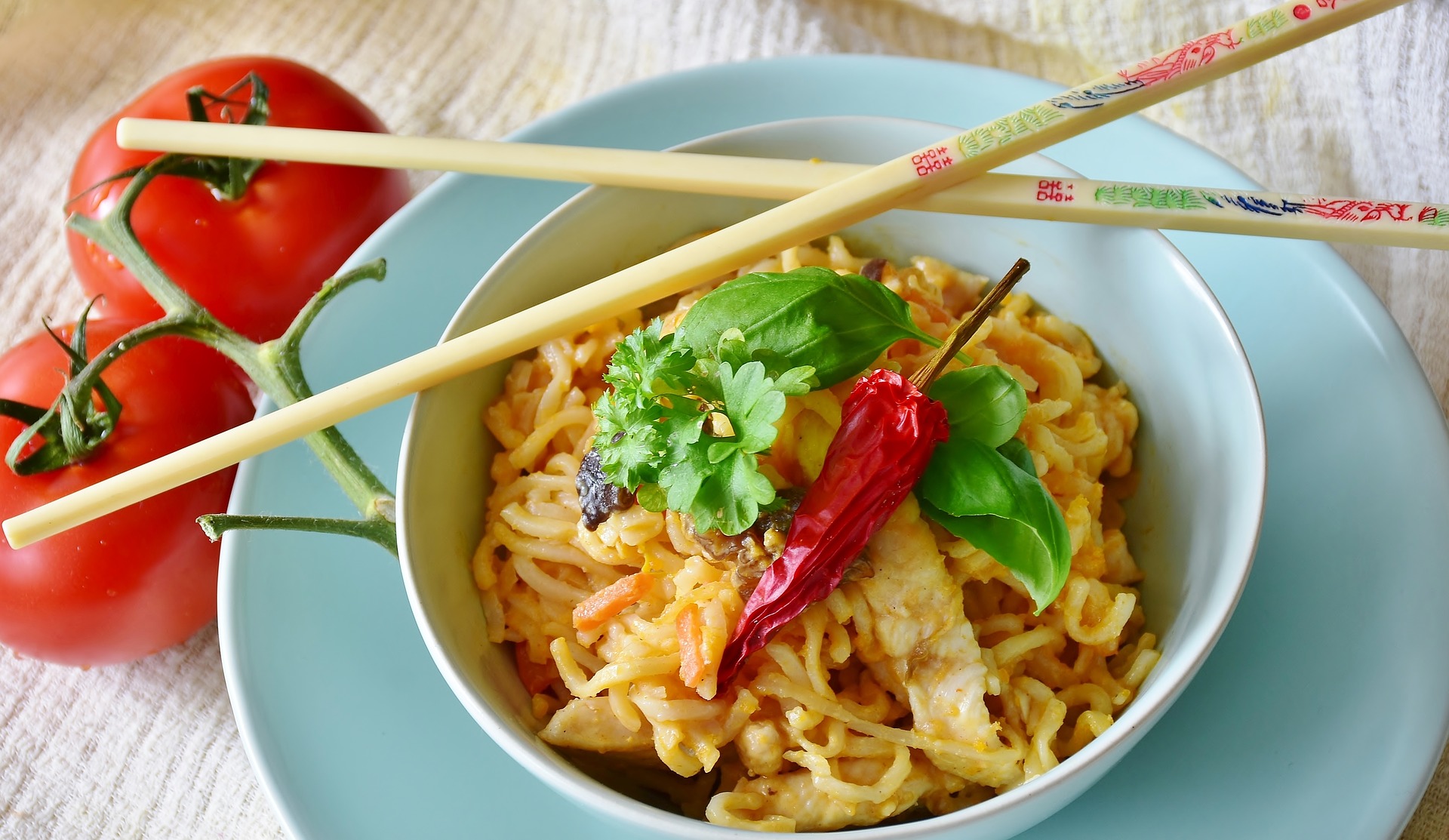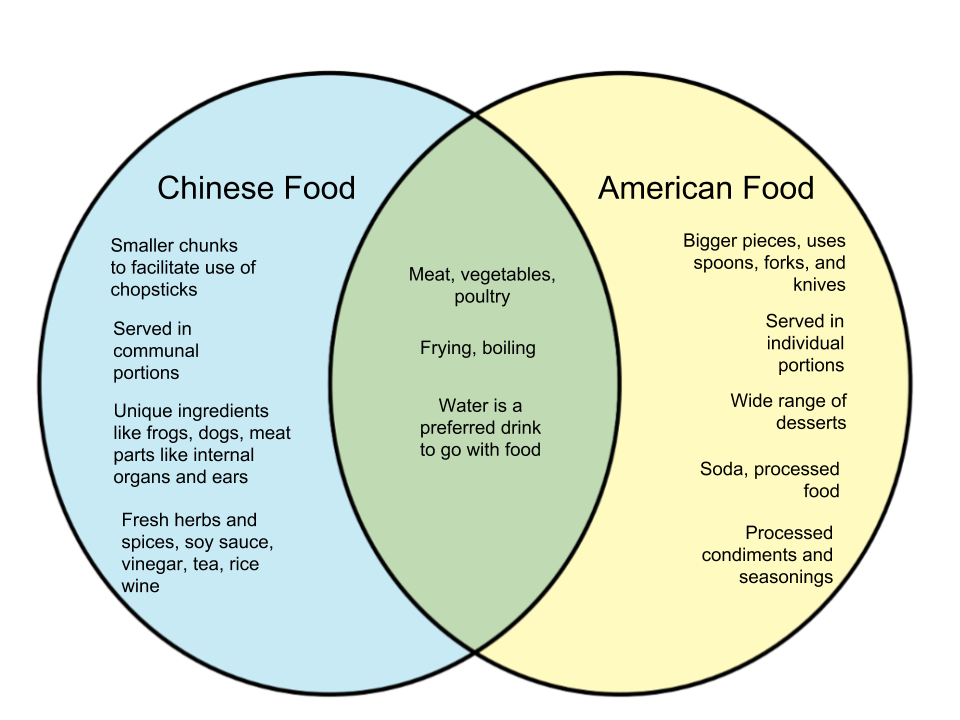
Food culture has always been diverse, what with each country having its own signature dish and cooking preferences. In this article, we will be comparing the difference between food in China and America.
Perhaps one of the most apparent differences between Chinese and American cuisine is the style of eating. Whilst Chinese food are arranged or prepared to suit the use of chopsticks, American food are designed to use the fork and knife, as well as the spoon. In effect, Chinese food is often chopped into small pieces while American food is served in larger ones.
In terms of presentation, food in China are served in communal portions – this might stem from the fact that rice is a staple and that several side dishes to accompany rice are often served in a table. On the other hand, American food are served in individual portions.
The dessert culture in China is also considerably smaller than America, especially since America has appropriated different dessert-related techniques from various cultures. In terms of desserts, America has a broader range of sweets and is much more inclined to the use of sugar.
While Chinese food may not have much sweets, they make up for it with the abundance of savory dishes in their arsenal. Chinese food has a wide range of ingredients, and is savvy in using bones, feet, tongue, internal organs, and other meat parts that are not as commonly used in America. Chinese food uses a lot of fresh spices while American food is fond of processed spices and condiments.
Technique-wise, Chinese food utilizes a lot of cooking methods in their everyday cooking. This includes steaming, boiling, stewing, braising, sauteing, and using a wok. American food usually uses methods like frying, baking, roasting, and boiling.
China |
America |
|
|---|---|---|
| Primary utensils | Chopsticks | Fork, knife, spoon |
| Serving food | Communal portions | Individual portions |
| Size of food | Smaller chunks to facilitate chopsticks | Larger sizes, suitable for utensils used |
| Staples in cooking | Rice, plants, vegetables, grains, poultry, seafood, fruit | Meat, fish, chicken, vegetables |
| Use of meat | Uses a larger range of parts including internal organs, tongue, feet, etc. | Common parts like sirloin, tenderloin, flank, etc. |
| Use of flavoring | Fresh spices and herbs like star anise, ginger, green onion, cloves and fennel; uses whole or chopped chili | Salt, pepper, herbs like parsley and mint, processed condiments and spices like chili powder, ketchup and mustard |
| Cooking methods usually used | Steaming, boiling, stewing, braising, sauteing, quick fry with a wok | Frying, baking, roasting, and boiling |
| Cultural origins | A mix of different cultures including Mexican, Asian, and European cuisine | Asian origins, originated from cooking with focus on traditional medicine |
| Snacks | Nuts, dried fruit, roasted seaweed, seeds, rice crackers | Potato chips, popcorn, cheese, crackers, processed food |
| Desserts | Fresh fruit, glutinous rice-based desserts, almond jelly | Vast variety ranging from confections, pastries, bread and ice cream |
| Oils used in frying | Animal or peanut oil | Olive/sunflower oil, vegetable oil, butter |
| Dipping | Soy sauce, vinegar, dips based on above ingredients | Tomato sauce, ketchup, mustard, mayo, other processed condiments |
| Cooking vegetables | Fried, boiled, steamed, stewed | Fresh for salads, boiled |
| Preferred beverages | Tea, water | Water, soda, juice |
Venn Diagram
